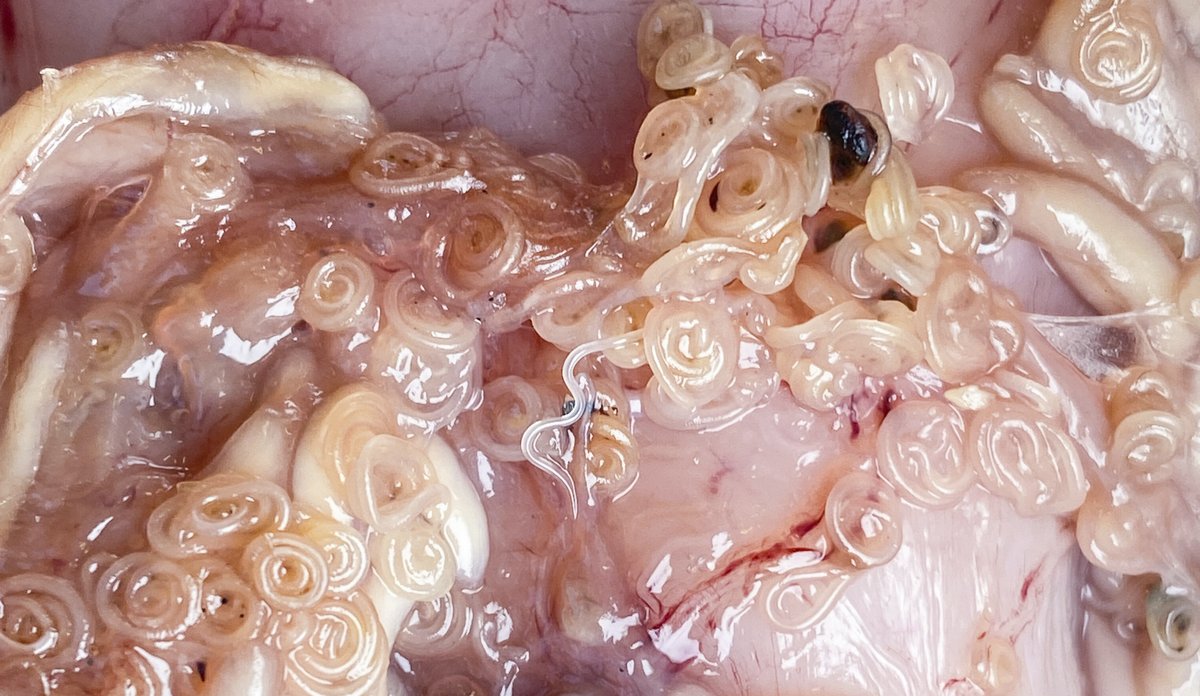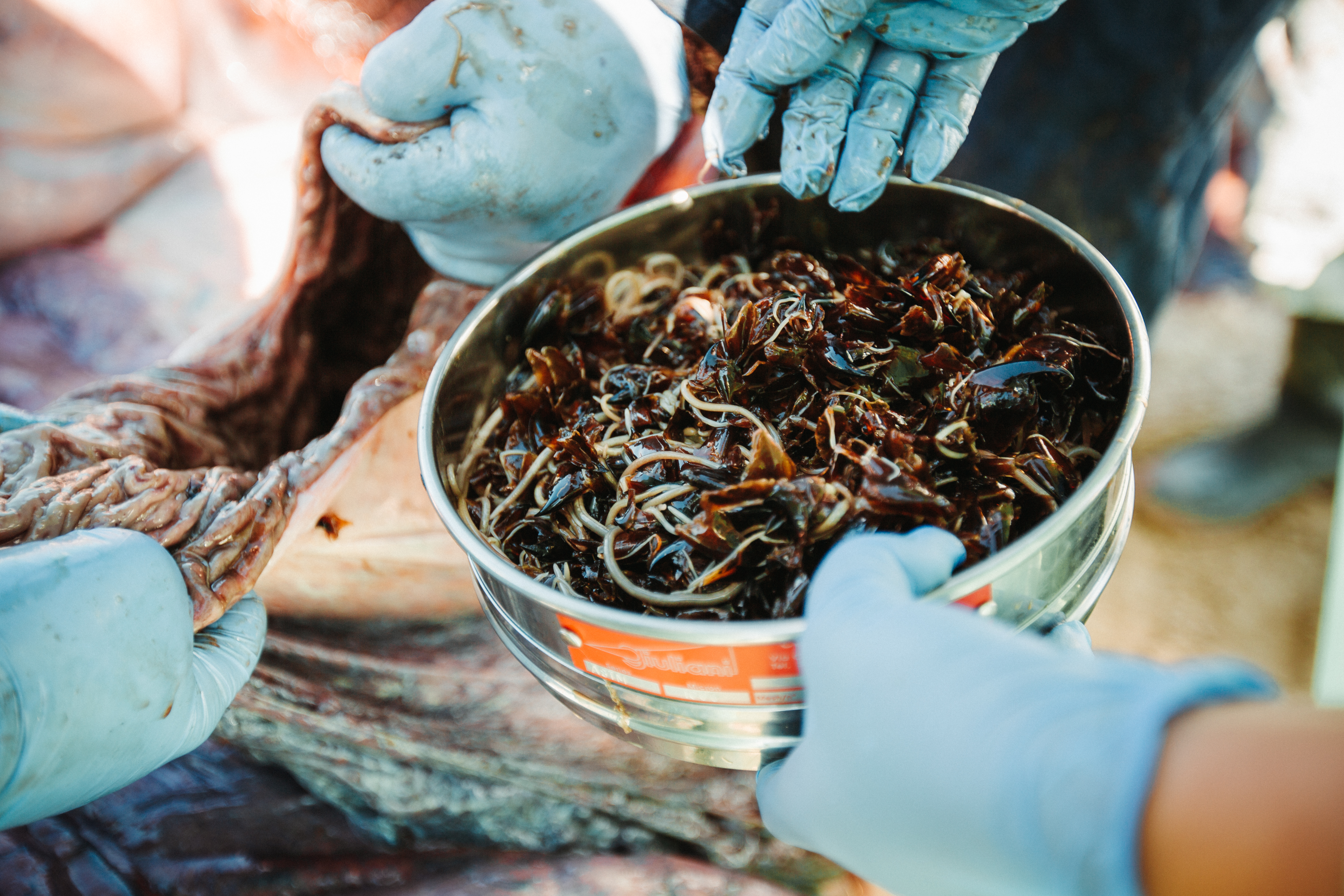Topic: Worms in fish: What you need to know about kveis

While gutting freshly caught fish, one will often find small, grayish-white worms in the intestines. Here on the appendix of a cod.
Photo: Paolo Cipriani / Institute of Marine ResearchPublished: 27.01.2025 Updated: 16.06.2025
The herring worm
The most common type of kveis in Norwegian waters is Anisakis simplex, often called herring or whale worm. The number of these worms in a marine area is closely linked to the presence of small whales like dolphins, porpoises, pilot whales and orcas which act as final host.
The Anisakis life cycle starts inside a whale’s intestine where female worms produce thousands of eggs, which are released into the sea. The eggs hatch into larvae, which are eaten by planktonic crustaceans like krill. Fish eat the krill, and the larvae settle in the fish's body, waiting to be eaten by a whale to complete the cycle. If a kveis-infected fish is eaten by a larger predator, like cod, the worms can accumulate in high numbers over time.
The cod worm
Another common type of kveis, frequently found in coastal cod, is Phocanema (formerly Pseudoterranova), also known as the cod or seal worm. These are bigger and more pigmented than herring worms, making them easier to spot in the fish flesh. Instead of whales, cod worms use harbour seal or grey seal as final host. Both species occur abundantly along the Norwegian coast.
Why to care about kveis?
Kveis represents primarily an aesthetic problem as the presence of living worms can be a rather unappetizing experience. They sometimes occur in such large numbers that one might be reluctant to prepare the fish for consumption. However, this is a paradox since numerous kveis usually indicate that the fish has been feeding well and is in good condition.
Nevertheless, it is the kveis that you don’t see, those that are embedded within the fish flesh, that can be of concern. Should one be unfortunate enough to ingest live kveis, there is a risk of acute gastrointestinal illness or allergic reactions.
However, heating fish to above 60°C in the core of the product, or freezing it to –20°C for at least 24 hours, will kill the worms. If you are planning to eat wild-caught marine fish raw or only lightly processed – like in sushi or sashimi – make sure it has been properly frozen.
Farmed Norwegian salmon and rainbow trout, however, are exempted from this so-called freezing requirement. That’s because studies by us between 2014 and 2016 found no kveis in market-quality fish of both species. The most plausible reason is that the fish are exclusively fed processed dry feed which cannot contain live parasites. If this is the case also for other farmed fish species in Norway such as cod and halibut, is still not clarified. So, for the time being, the freezing requirement applies to these species.
Further details about the current regulations dealing with parasites in seafood, can be found on the Norwegian Food Safety Authority’s website (Mattilsynet.no).
The IMR is monitoring commercial wild fish for “kveis”
For more than 20 years, the Institute of Marine Research has been tracking parasite levels in key fish species like herring, mackerel and cod. While the situation has remained stable in herring and mackerel, the level of the common kveis-type Anisakis seems to be increasing in cod from the southern Barents Sea.
One likely reason is that more whales are now entering the Barents Sea in summer to feed on small fish. This is probably linked to climate change, which is shifting the distribution of many marine species farther north. As more whales spend longer time in the area, the biomass of kveis introduced into the ecosystem increases as well.

